Whether you’re frying it, roasting it, steaming it, or digging into it raw, broccoli is fantastically flavorful, not to mention good for you.
Maybe it’s all in my head, but I swear it tastes even better when I’ve grown it myself.
The only problem is that it seems like certain types of fungi, bacteria, and other pathogens can’t get enough of cole crops, either.
From ailments that simply make the leaves a little ugly to problems that can completely wipe out your plants, there are quite a few broccoli diseases to worry about.

We link to vendors to help you find relevant products. If you buy from one of our links, we may earn a commission.
The good news is that once you know the best gardening practices, it’s not too hard to avoid most problems. And if disease pathogens do attack, this guide will help you to control or eliminate them.
Here are the common infections that we’ll go over:
13 Common Broccoli Diseases
There’s no doubt that broccoli diseases can be devastating. Let’s jump right in so you can learn how to head them off before they can take hold.
1. Alternaria Leaf Spot
While this disease probably won’t kill your plants, a bad infection can reduce foliage vigor and size, which can mean smaller or no heads.
It’s caused by the fungi Alternaria brassicicola and A. brassicae, which thrive in high humidity (around 90 percent and up), and temperatures between 60 and 78°F.
The first sign is tiny black spots on the older leaves and heads. That’s why this disease is sometimes called black spot.
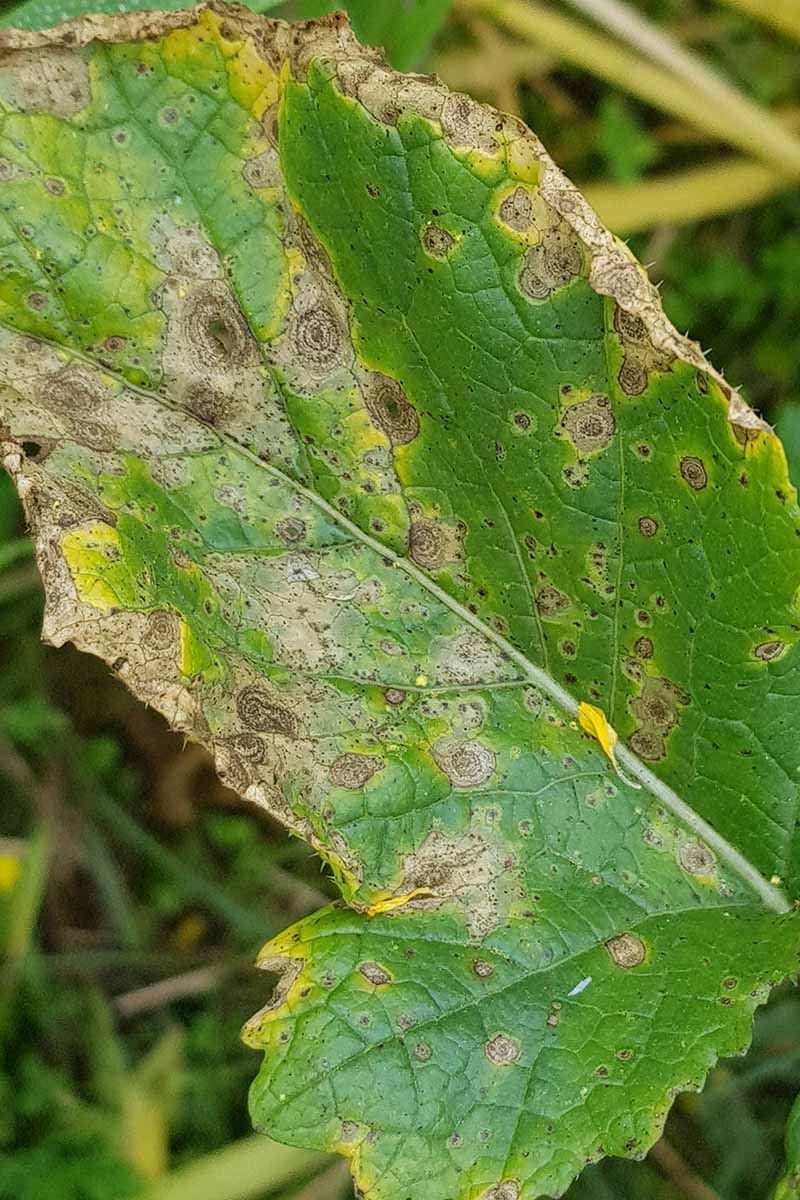
On the leaves, these spots expand and turn yellow with a black halo around them. Later, younger leaves become infected and the spots may merge, resulting in dead patches on the foliage.
The fungi live on plant debris and in seeds, so keeping your garden clean and buying certified disease-free seed is an important part of avoiding this particular problem.
It’s also spread by insects like aphids and flea beetles, and through water and wind.
The fungi can also hitch a ride on your tools, shoes, clothing, or skin. That means you need to sanitize your tools after use in a solution of one part bleach and 10 parts water.
Change your clothes and wash your skin if you are working in a garden where these disease pathogens have taken up residence, and sanitize the bottoms of your gardening shoes as well.
You should also rotate your crops. Never plant brassicas in the same place more than once every three years.
Finally, water at the base of plants, not from overhead.
A liquid copper fungicide spray can slow the spread of Alternaria leaf spot or even eliminate it if the infection isn’t too bad.
Bonide Liquid Copper Fungicide
Arbico Organics carries my personal favorite: Bonide Liquid Copper Fungicide. You can purchase this in 16- or 32-ounce ready-to-spray bottles. It also comes in a 16-ounce concentrate.
I always keep some in my gardening toolkit, and it has saved many a plant in my garden.
2. Blackleg
Blackleg can be a serious problem in brassicas. You want to know what to look for, how to prevent it, and how to get rid of it if it pops up, especially since it can reduce yields.
Also known as stem canker, blackleg is caused by the fungus Leptosphaeria maculans, which is also classified as Plenodomus lingam and anamorph Phoma lingam.
Whatever you call the fungus, blackleg can cause a range of symptoms, including black lesions or rot on the stem, brown or ash-colored leaf spots, and holes in the leaves as the spots fall out. Seedlings may die or infected seeds may fail to emerge.
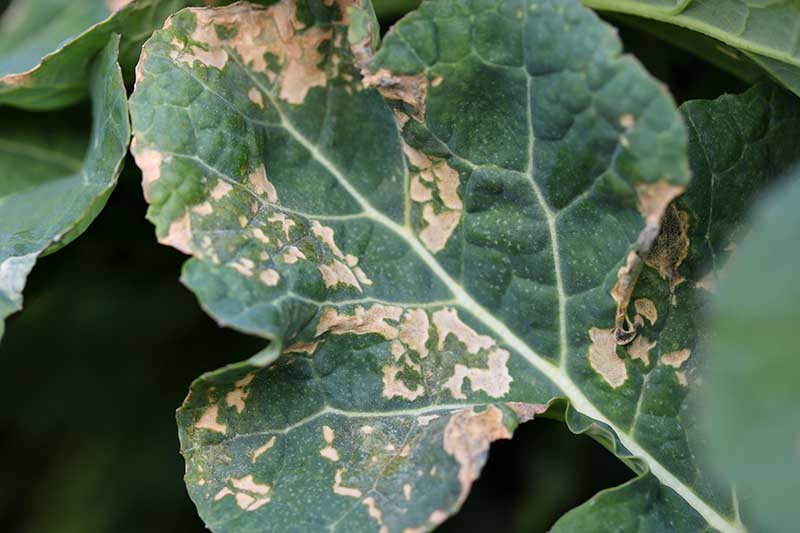
Under ground, the roots rot away. Heads may form normally at first, but they eventually develop brown lesions.
Crop rotation is an important method of control. Brassicas should only be planted in the same spot once every four years to avoid this disease.
You should also keep cruciferous weeds in check because they may act as hosts to the pathogen. Be sure to clean up any debris in the fall.
Make sure you’re buying disease-free seed and water at the soil level, not on the leaves, since blackleg can spread via water.
Trim away any leaves that show symptoms. If the fungus spreads beyond the leaves, you’ll need to break out the fungicides.
The sooner you start treatment, the better off your crop will be. Biofungicides containing Bacillus subtilis, such as CEASE, can help.
Pick some up at Arbico Organics in one- or two-and-a-half-gallon jugs.
3. Black Rot
The bacteria Xanthomonas campestris pv. campestris causes a disease commonly called black rot, and it’s bad news.
All cruciferous plants are at risk of infection, including garden veggies like broccoli and weeds like wild mustard.
It doesn’t look like much to begin with, just a few yellow splotches on the margins of the leaves. But those splotches grow bigger and form a large v-shape.
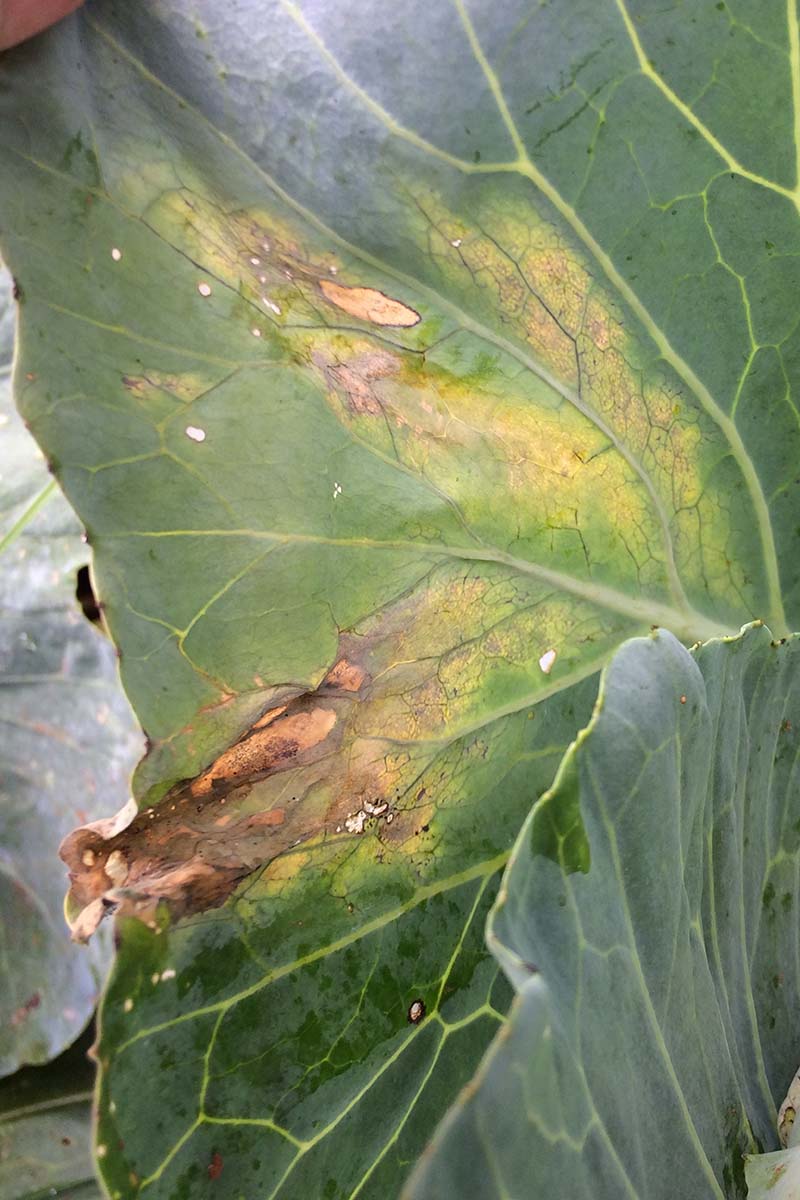
Then, the splotches turn brown and necrotic. Next, the veins and stems of the plant start to turn brown or black, and necrotic spots form on the head. Eventually, the plant wilts, and the leaves rot.
It spreads easily via tools, hands, insects, and even water, and it thrives in warm, humid conditions in the high 70s.
There is no cure, but you can slow its spread with a copper fungicide. If the disease doesn’t cause the head to rot, you can still eat it.
If the plant is too far gone, pull it and dispose of it – don’t put it in your compost.
In the future, make sure any seed you purchase is certified disease-free, and rotate your crops. Clean your tools in between uses, and keep pests like aphids and flea beetles away as much as possible.
Find more information on controlling black rot here.
4. Clubroot
Clubroot is a disease of crucifers caused by an obligate biotroph protist called Plasmodiophora brassicae. The primary symptom is – you got it – clubbed, enlarged roots.
This pathogen is neither a type of fungi nor an oomycete, it is a single-celled eukaryotic organism that relies on plant cells for food without killing them – an obligate biotroph. It is often classified with other fungal diseases, but it does not actually fit into the category of animal, plant, or fungus.
It’s not just the main roots that are impacted, but the secondary and fine roots, as well. So how the heck do you know if your plants have it since you can’t see the roots?
The first thing you might notice is wilting during the day, even if the plant has plenty of moisture in the soil or it isn’t hot out.
As the disease progresses, you’ll start to see the leaves turn yellow and eventually die. Broccoli heads might be stunted or small.
So what do you do?
Start with appropriate steps to prevent an infection. That means buying disease-free seeds, keeping weeds away, and rotating those crops!
Don’t plant any brassicas in the same spot more often than every six years to prevent clubroot spread.
There isn’t a good treatment option available for home gardens, so you’ll need to pull infected plants and dispose of them.
5. Damping Off
If you garden for long enough, you’ll bump up against damping off. It’s caused by oomycetes in the Pythium genus and fungi in the Fusarium genus.
What’s it look like? You’ll plant your seeds in the soil and they won’t germinate. Or, if they do, the seedlings will be stunted, they might wilt, and they may be water-soaked at the base.
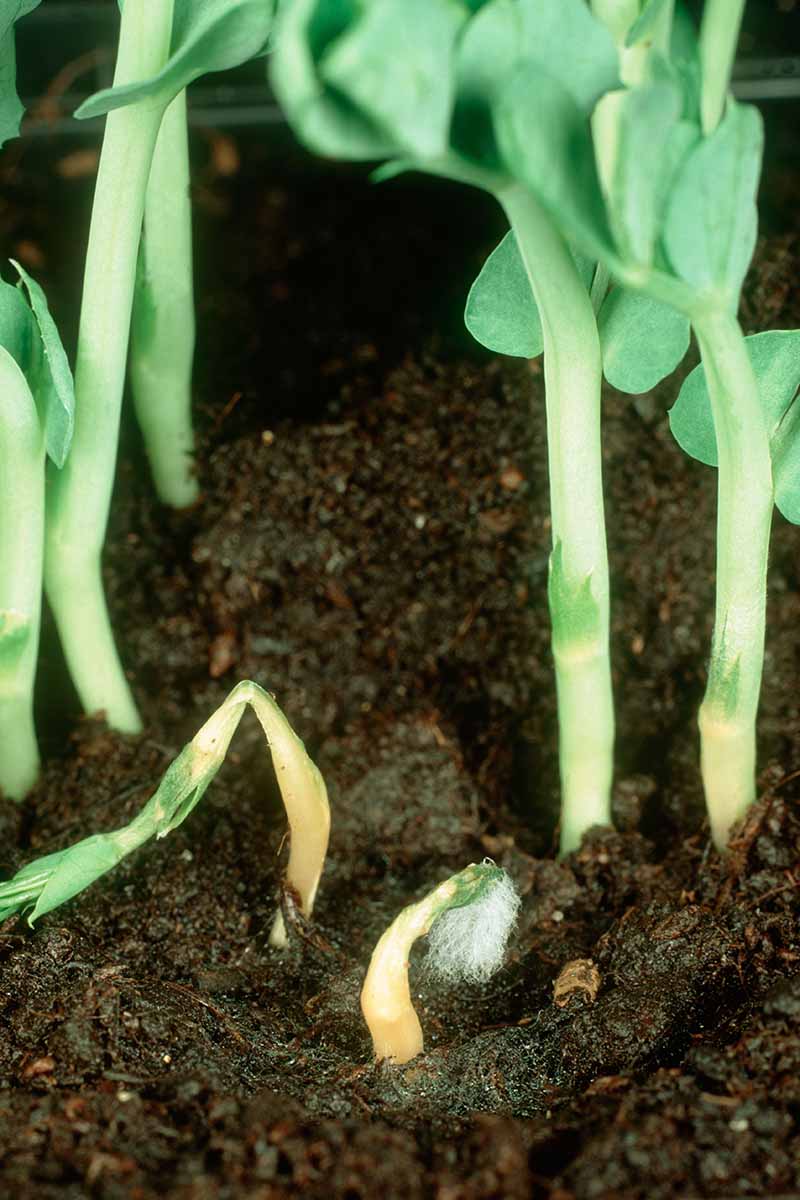
No matter what you do, if the seedlings manage to survive, they will never thrive.
With the right preventive steps, you can avoid this disease. But if it does pop up, there are treatment options. Our guide to damping off can help.
6. Downy Mildew
Downy mildew, a disease caused by the oomycete Hyaloperonospora parasitica, can stunt growth and cause damage to broccoli heads.
Before that happens, however, you’ll typically see little yellow or brown spots or irregular splotches on the foliage. Those splotches can eventually merge and the affected leaf might die.
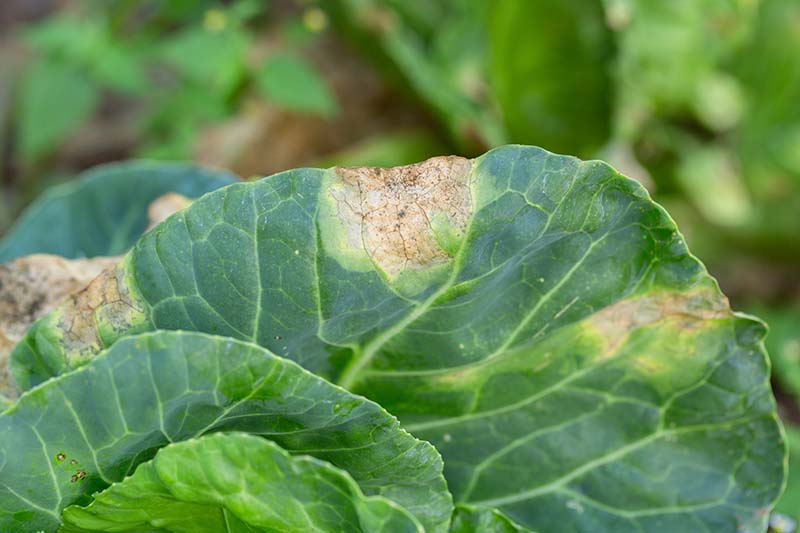
You’ll also see a fuzzy gray or purple growth on the underside of leaves. And that fuzzy growth can appear on the heads as well.
Even worse is if young seedlings come down with an infection. These may be killed off entirely.
We’ve said it before and we’ll say it again: rotate your crops! It’s one of the easiest ways to avoid downy mildew. If you plant brassicas in one spot, plant something else there for the next two years.
Keep your gardens well-weeded, put your plants in the ground spaced at an appropriate distance – usually about 24 inches for most cultivars, and water in the morning at the soil level.
You want to do your best to avoid downy mildew in the first place, but stuff happens. If you catch it early enough, you can treat it with a wide range of sprays.
Copper fungicides and products containing geraniol, such as Banish, are effective.
Banish comes in 32-ounce or gallon-size concentrates that will last you a good, long while. Make your way over to Arbico Organics to pick some up.
7. Fusarium Yellows
Fusarium oxysporum f. sp. conglutinans can infect any member of the brassica genus, though cabbage is more at risk than broccoli. Still, it’s not unheard of for broccoli to contract fusarium yellows.
If you’re growing your plants in the winter, you won’t have to worry about this fungal disease. But in the warmer spring or fall, it can be a problem. That’s because Fusarium thrives when temperatures are around 75 to 85°F.
The nice thing is that if the temperatures drop, the disease might stop in its tracks without progressing any further.
So what does it look like?
While many diseases can cause plants to turn yellow, fusarium yellows has a pretty distinct pattern. You’ll most often see one half of your broccoli – the leaves and the head – turn yellow or pale green.
Unless the infection is stopped by changing temperatures, the plant will be stunted and the head will be small, or it might not form at all.
Unfortunately, there is no cure. This disease pathogen lives in the soil, so crop rotation is important. Remember, at least three years is recommended between crops in the brassica genus.
‘Batavia,’ ‘Belstar,’ ‘Burney,’ ‘Covina,’ and ‘Tahoe’ are all resistant cultivars. Plant these if you have fusarium in your area or if you’ve struggled with it in the past.
8. Mosaic Virus
Mosaic virus is something you should watch out for because it’s incredibly damaging to crucifers in general.
There are several different viruses (CMV, CaMV, TuMV, TYMV, BWYV, TMV and TSWV) that can infect broccoli, but the symptoms are all the same.
Look for yellow mosaic patterns, or black necrotic rings or spots on the foliage. The leaves may also become distorted.
You might see black necrotic patches that extend deep into the heads, but these might not develop until after the heads have been harvested.
The virus is spread by aphids and lives in weedy crucifers like mustard. Weed your garden beds regularly and do what you can to control aphids.
Otherwise, there isn’t much you can do. Pull any infected plants and destroy them. Don’t put them in the compost.
9. Powdery Mildew
Powdery mildew is caused by the fungus Erysiphe cruciferarum. If you see little patches of white that look like dustings of flour on the top and bottom of your broccoli plants, it’s likely that they have this disease.
As things progress, the fungus can completely cover the leaves, and the foliage might even turn yellow. This can stunt the plant’s growth and cause much smaller heads to form. You might see powder on the heads as well.
There are lots of things you can do to avoid having to deal with this problem in the first place.
Crop rotation (notice a trend here?) so that you never plant broccoli or anything closely related to it in the same place more than once every three years is the first step.
Keep your plants well-watered and appropriately fed. You don’t want to give them too much nitrogen. That can encourage powdery mildew infections.
If your plants contract powdery mildew despite your best efforts, copper fungicide, neem oil, and insecticidal soap are all effective so long as you follow the manufacturer’s directions.
I recommend starting with the soap or oil before moving to the copper fungicide, and rotate which treatment you use.
Learn more about how to treat powdery mildew in our guide.
10. Ring Spot
Do you want the good news or the bad news first? On the bright side, unless this disease is extremely advanced, it probably won’t impact your harvest. The bad news is that it’s ugly and can be difficult to get rid of.
Ring spot is caused by the fungus Mycosphaerella brassicicola, which results in symptoms that can be hard to differentiate from Alternaria.
You’ll need to look closely at the spots. If they are more of a gray color (though they can be brown or black) and have tiny black dots that look like pepper in them, it’s ring spot.
If this disease advances, it can reduce photosynthesis and slow growth as the spots grow and merge.
It’s spread by wind, water, and tools, and can be carried on your clothes or skin as well. It also lives on cruciferous weeds and veggies.
Spray plants with a copper fungicide at the first sign of an infection.
11. Sclerotinia Stem Rot
Sclerotinia is the genus name for two types of fungi that can attack cole crops, and the disease they cause goes by this name as well. Sclerotinia minor and S. sclerotiorum cause similar but distinct symptoms.
S. minor doesn’t extend up the plant to the upper leaves or heads. It sticks to the lower stem and leaves. S. sclerotinia impacts the entire plant, from top to bottom.
Infected plants will have soggy-looking necrotic spots, and turn soft and die. As these spots grow in size, it can eventually cause the entire plant to become necrotic and collapse into a mushy heap.
If you practice good garden hygiene, including crop rotation, watering at the soil level, removing weeds, and giving your broccoli plants ample space when you put them in the ground, you probably won’t have to worry about this problem.
It’s more of an issue for commercial growers or seed producers. Speaking of which, be sure to purchase disease-free seed, since it lives on seeds.
If you do see signs of this issue in your garden, early treatments with a copper fungicide can help.
12. White Blister
White blister or white rust is a disease caused by the oomycete Albugo candida.
When your broccoli is infected with this disease, you’ll notice little raised bumps on the stem, flowers, and leaves. Eventually, these pustules rupture and release a white powder-like substance.
It thrives in cool, wet weather, and while it won’t usually destroy the head, it can cause the plant to be less vigorous.
Copper fungicides and broad-spectrum fungicides such as MilStop SP are excellent at destroying this disease.
Mix the powder with water following the manufacturer’s directions and spray plants when symptoms are present.
Head over to Arbico Organics to make a five or 25-pound bag part of your arsenal against broccoli diseases.
13. Wirestem
Wirestem is a disease that only impacts young plants. Caused by the fungus Rhizoctonia solani, this disease shows up as rot on the stem just above the soil level. Leaves may turn blue, and they may wilt.
If it doesn’t kill the plant entirely, seedlings that survive will never be vigorous, and they might not ever produce a head.
This fungus lives in the soil, making regular crop rotation important. You should only plant a cole crop in the same place once every three years if you want to avoid this fungus.
And for that matter, if you’re growing your broccoli crop in containers, it’s a good idea to dispose of infected soil entirely, sanitize your pots and planters, and start fresh the next season if you’ve had issues with disease.
R. solani prefers warm, moist soil, so broccoli planted in the late summer or early fall is most susceptible.
Take care to clean your tools in a solution of one part bleach and 10 parts water. Purchase certified disease-free seeds and seedlings, and don’t use nitrogen-based fertilizer when plants are young.
Unfortunately, fungicides aren’t effective against this disease.
Broccoli Diseases Don’t Have To Spell Disaster
Don’t be intimidated. I know this list is long, but most diseases can be avoided by practicing good garden hygiene.
Rotate your crops, water at the soil level, buy disease-free seed, space plants well, and weed, weed, weed!

If you have success in driving away these dreaded diseases, come back and let us know what method worked best for you in the comments. It’s always helpful to share with others who might be dealing with the same situation.
While you’re here, if this article helped you to feel ready to tackle plant diseases, you might want to check out some of our other broccoli guides next to ensure your best harvest ever:

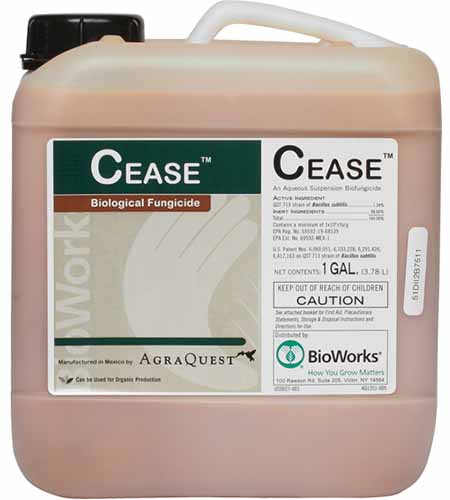
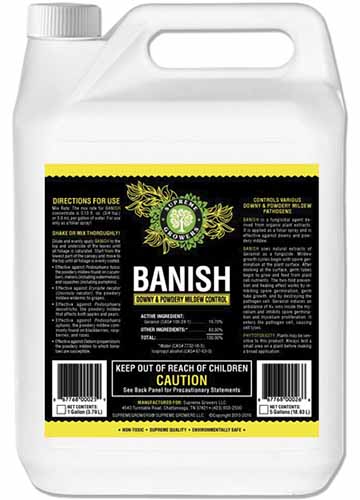


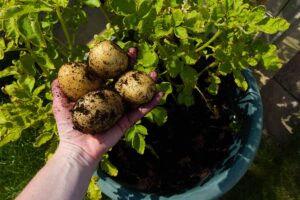
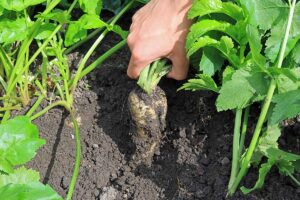
How do I download
Your best options are either to save a copy for reading offline via your web browser, or you can save our articles in PDF format using the print function in your browser.
You don’t need to worry – plant viruses do not affect people and they can’t make us sick. However, humans can contribute to the spread of plant pathogens around the garden and from plant to plant on our shoes, gloves, and tools, so it’s important to practice good garden hygiene.
Why do the last few diseases have no pictures of the disease?
We do our best with what we have access to, Danielle. If additional photos become available to us at a later date, we’ll be sure to add them. Please let us know if you have any gardening questions we can help with!